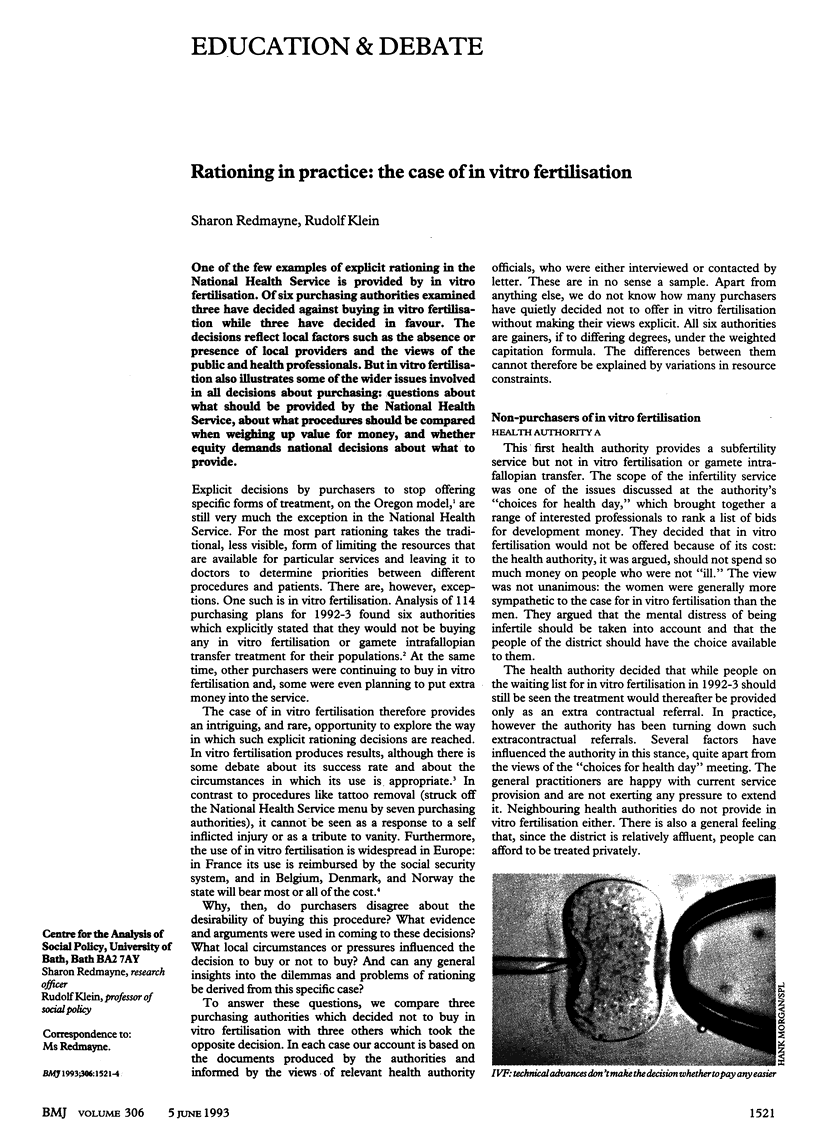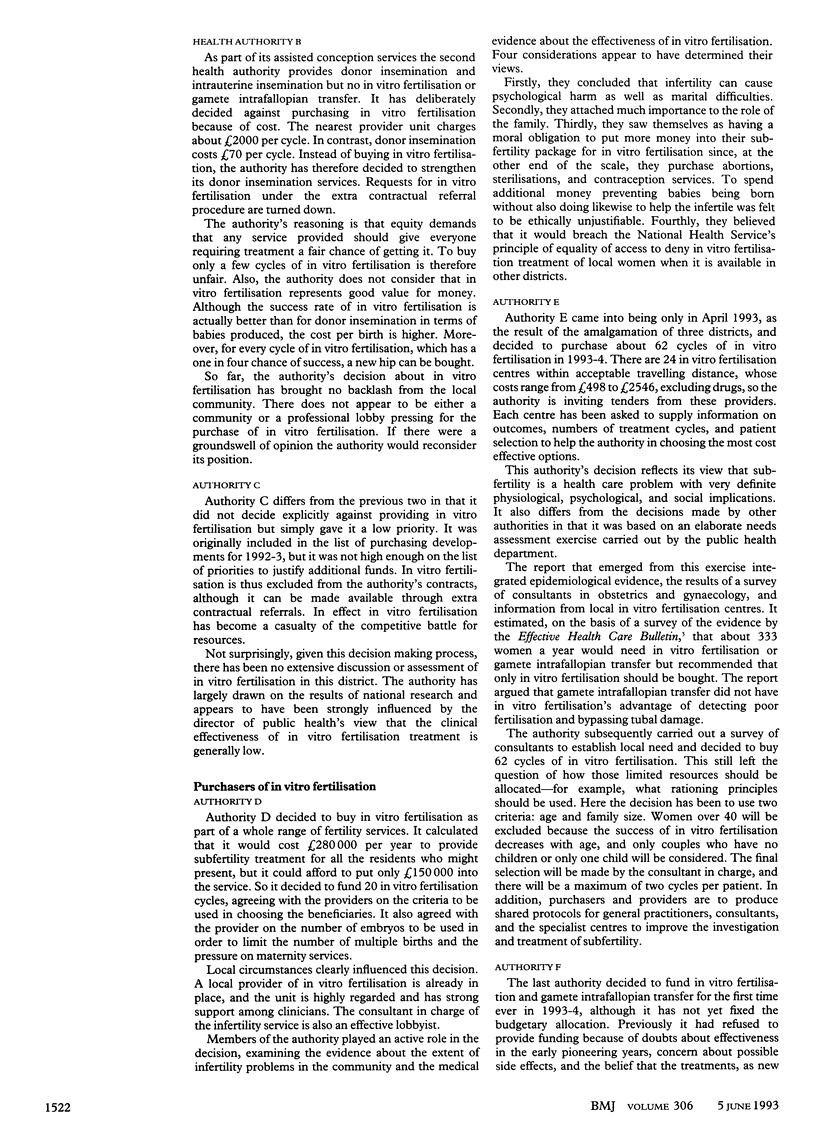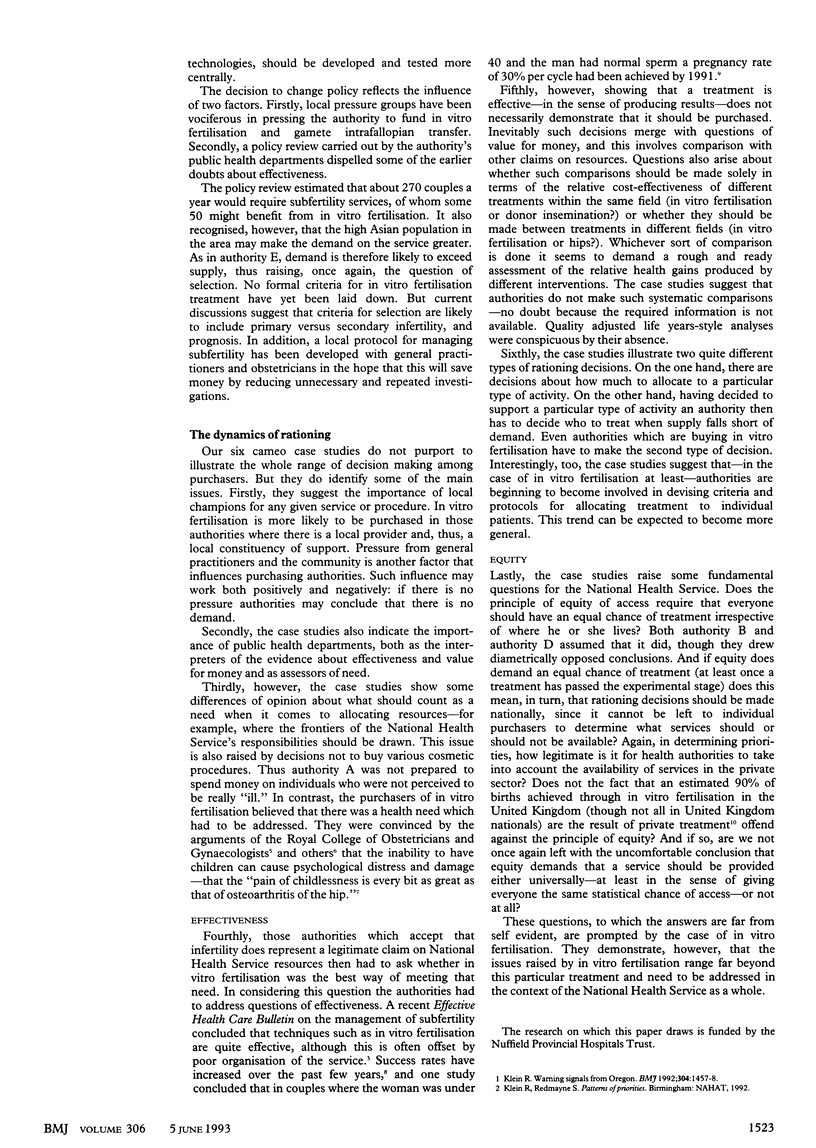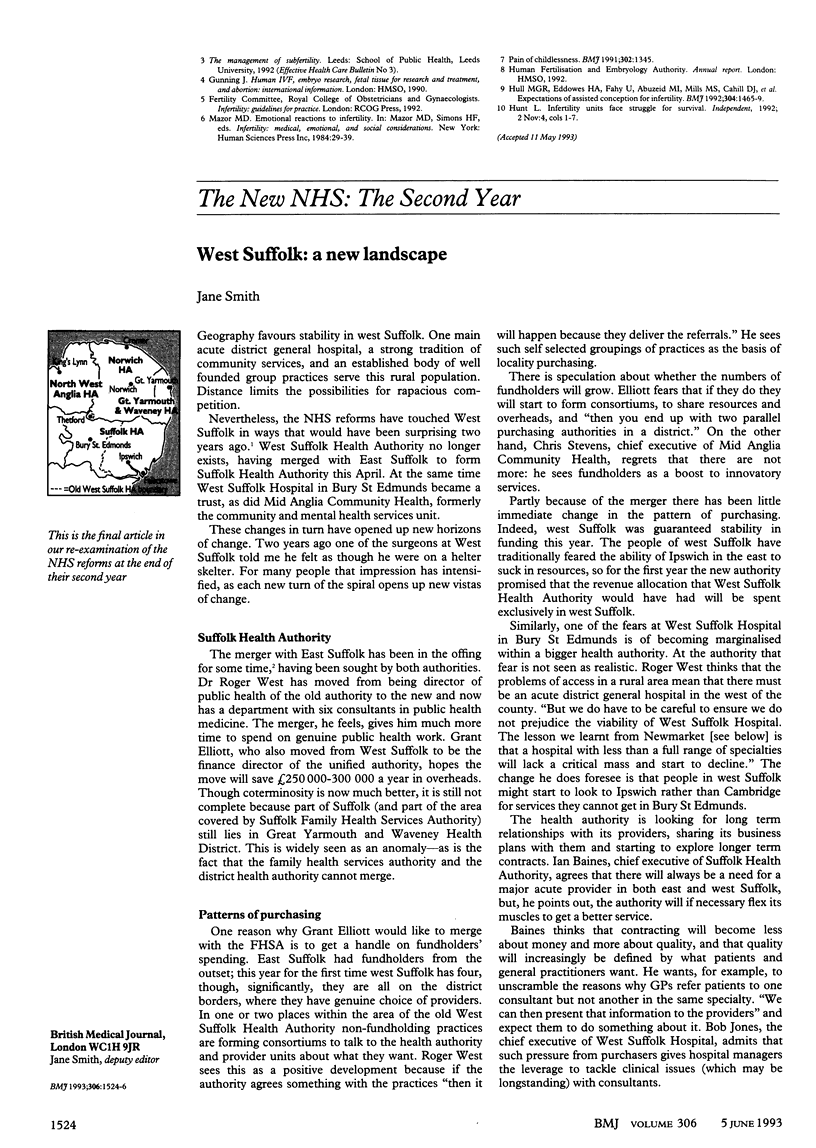Abstract
One of the few examples of explicit rationing in the National Health Service is provided by in vitro fertilisation. Of six purchasing authorities examined three have decided against buying in vitro fertilisation while three have decided in favour. The decisions reflect local factors such as the absence or presence of local providers and the views of the public and health professionals. But in vitro fertilisation also illustrates some of the wider issues involved in all decisions about purchasing: questions about what should be provided by the National Health Service, about what procedures should be compared when weighing up value for money, and whether equity demands national decisions about what to provide.
Full text
PDF



Images in this article
Selected References
These references are in PubMed. This may not be the complete list of references from this article.
- Hull M. G., Eddowes H. A., Fahy U., Abuzeid M. I., Mills M. S., Cahill D. J., Fleming C. F., Wardle P. G., Ford W. C., McDermott A. Expectations of assisted conception for infertility. BMJ. 1992 Jun 6;304(6840):1465–1469. doi: 10.1136/bmj.304.6840.1465. [DOI] [PMC free article] [PubMed] [Google Scholar]
- Klein R. Warning signals from Oregon. BMJ. 1992 Jun 6;304(6840):1457–1458. doi: 10.1136/bmj.304.6840.1457. [DOI] [PMC free article] [PubMed] [Google Scholar]



